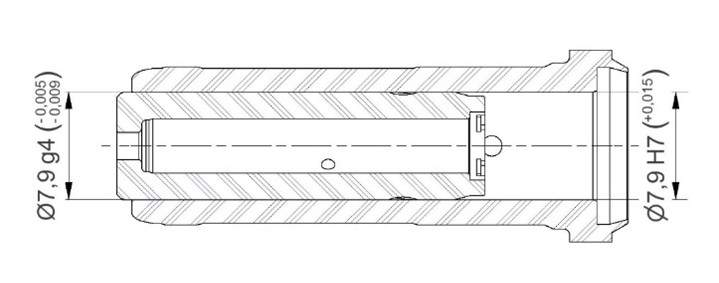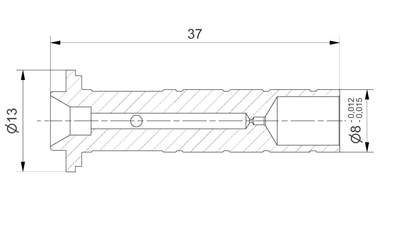Manufacturing-Optimized Division of Tolerances: Save Costs While Maintaining Precision
In the design of precision-turned parts, the correct division of tolerances plays a crucial role—especially when it comes to the backlash between two components. A production-oriented planning approach not only saves money but also time and additional processing steps.
Example: Housing and Armature
Let’s take a practical example: The backlash between a housing and an armature should be between 5 µm and 24 µm.
The question is: How can this tolerance be optimally distributed between the two components - bore and shaft?
Option 1: Even Tolerance Distribution
Both components receive similar tolerances - this ensures balance but is not always the most efficient solution in manufacturing.
Option 2: Production-Oriented Tolerance Shift
Here, the tolerance is strategically distributed:
- Shaft (Armature): Ø7.9g4 with 4 µm tolerance → Cost-effective production using a through-feed grinding machine
- Bore (Housing): Ø7.9H7 with 15 µm tolerance → Can be produced on a lathe without rework

Advantage: Clear Savings Potential
By shifting the tolerance to the component with simpler manufacturing options, complex processes like honing or internal grinding can be avoided. This reduces machining effort and lowers production costs—while maintaining functionality and precision.
Conclusion: Early, manufacturing-optimized tolerance division - aligned with the chosen production methods - pays off. Contact us if you want to make your component design more efficient. We’re happy to support you with our long-standing expertise in precision turning.
 Effective Separation of Complex Components – Ensure Functionality, Optimize Manufacturing
Effective Separation of Complex Components – Ensure Functionality, Optimize Manufacturing
